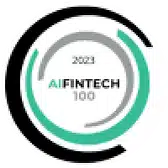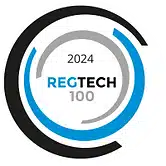A Comprehensive Guide to Check Fraud Types, Methods, and Terms
Check fraud is surging, costing US banks millions of dollars every year. Before you can hope to win the battle to prevent and limit it, you need to understand it. Here is a complete guide to the terms, methods, and types of fraud that you’ll encounter in the struggle against check fraud.
Common Check Fraud Terms
Check
An official piece of paper used by financial institutions and account holders to move money. Checks operate as a sort of ‘IOU’ note telling your bank to move a specified amount of money from your account to the payee’s account. Paper checks contain your account number, bank routing number, a check number, and spaces to type or print other relevant information.
Item
Industry slang for checks. Because personal/business checks and other negotiable instruments are usually issued as a piece of paper, a physical item, checks are referred to as items in common banking terminology.
Maker Bank
This is the name of the bank that promises to pay out the amount of money written on the check. The name of the institution is printed on the check.
Bank of First Deposit
This is the bank where the check is initially presented for negotiation (deposit or cashing). This is usually the bank that requests payment from the maker bank and receives the amount of money specified on the check.
Cash Letter
A list of checks sent from a bank of first deposit to a maker bank for payment. In times past, banks of first deposit would physically send the check items to the maker bank in a bundle to request payment. Now, these are digital files showing the checks with a list requesting payment for each.
In-Clearing
In-clearing is a business process where a maker bank receives cash letters from every bank of first deposit where its checks were deposited. They review the check items and make payment as appropriate. In this phase, there are usually also fraud detection systems or processes in place that identify anomalies and create alerts. The alerts are reviewed for fraud or other issues, and maker-bank employees make decisions about paying the potentially fraudulent check or returning it to the bank of first deposit unpaid. Checks are said to be “in-clearing” while the maker bank is making the pay/no-pay decision.
On-Us
Checks written between accounts at the same financial institution. The process of verifying and paying out for them is slightly less time consuming than for checks written between different financial institutions since the bank can see whether the funds are available in the check writer’s account.
Check Stock
This is the paper used for printing checks. Often this paper includes security features such as magnetic ‘MICR’ ink, micro-printing, and specialized designs.
Remote Deposit Capture (RDC)
The process of depositing a check or negotiable instrument remotely, instead of coming into the bank with a physical check. It’s done using an online banking or a mobile app to send a digital image of the check.
Negotiable Instrument
Personal and business checks are different from other paper items such as cashier’s checks, official checks, and money orders, which are collectively known as negotiable instruments. Negotiable instruments are considered to become the funds they represent, so they function more like paper money. Personal and business checks only describe the amount of money to be paid out and the payee designated to receive the funds. The holder can’t receive the money described on a personal/business check until the check has gone through a clearing and reconciliation process between financial institutions and their respective customers’ accounts.
Detection Responsibility on the Maker Bank
The maker bank bears responsibility for spotting these types of check fraud:
Counterfeit Checks
Items printed by the fraudster to look identical to known checks, or digitally manipulated checks that are deposited via remote deposit capture (RDC).
Duplicate Check Fraud
Checks that were re-created and presented at multiple institutions for negotiation.
Remote Deposit Capture Fraud
Use of digital images to present duplicate, altered, or counterfeit items for deposit via mobile app or online banking.
Forged Checks
Blank or digitally manipulated items that a fraudster fills out with fake payee and/or amount information to fit their scheme.
During the check clearing process, checks identified as counterfeit, along with blank checks with forged details or signatures, must be returned (usually via digital file) by the maker bank to the bank of first deposit within 24 hours of request for payment.
Detection Responsibility of the Bank of First Deposit
The first financial institution that sees a check is in the best position to detect the following types of fraudulent checks:
Altered Checks
Legitimate checks that have been changed to move funds to a different payee and/or different amount. This may occur by “washing” or other means of changing the physical item.
Check Washing
A method that uses acid or other chemicals to remove ink from a legitimate check and change the payee and/or amount of the check.
Forged Endorsements
Forged endorsements are when an unauthorized person signs the back of the check. If a check is falsely endorsed in an unauthorized way, the liability is with the bank of first deposit.
If altered items are not detected at the bank where they are first deposited, they are sent via cash letter to the maker bank.
How Fraudsters Obtain Checks for Fraud
There are a number of ways that thieves get hold of checks that they use for check fraud purposes:
Stolen Checks
Mail theft, break ins, and garbage theft are all ways that thieves and criminal gangs get physical possession of checks for fraud.
Third-Party Fraud
Checks can be stolen while in-transit, or photographed by employees with access. Traditional paper checks are sometimes left unattended on desks or counters, waiting to be mailed, transferred, or filed.
Insider Embezzlement
When someone can use checks to pay out company funds, they could exploit lax controls and funnel money via checks for improper payments. Such insiders can pay non-existent employees, vendors, or contractors, or inflate payments and receive kick-backs.
Dark Web Purchase
Check images and account credentials are readily available on dark-web marketplaces. Such images can be used for remote deposit capture, or to print counterfeit items on paper check stock.
How Fraudsters Obtain Accounts to Cash-out on Check Fraud
There are also numerous ways for thieves to gain access to accounts that they can use as part of their check fraud operations. Sometimes, accounts are used to create fake checks that are made out to other individuals. At other times, they’re used to cash fraudulent checks.
Phishing and Check Fraud
Fraudsters use phishing attacks to get personal information, and then use it to gain access to bank accounts and hack other personal information. Checks can be created from such information and used to steal funds.
Accounts and Credentials for Sale on Dark Web
Marketplaces for criminal products and services offer a myriad of ways to use bank accounts that were compromised, either through identity theft or via stolen passwords.
Identity Theft
Stolen identity documents allow criminals to obtain or take over bank accounts, then cash or deposit checks written under that identity.
Synthetic ID
Criminals apply for credit using a fake tax ID number (TIN), or one that belongs to a child or a dead person. The first application will naturally be rejected, but the inquiry to the credit bureau creates a record that provides legitimacy to the TIN. In future attempts, the rejected query serves as a ‘synthetic’ verifier of the previously non-existent TIN. With many attempts, synthetic identities become successful and can be used to perpetrate all kinds of fraud.
Learn more about Refine’s Intelligent Customer Outreach for Check Fraud Prevention >>




